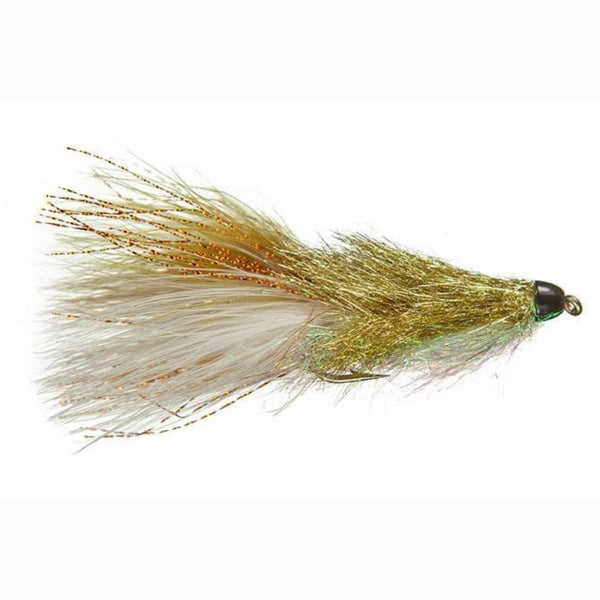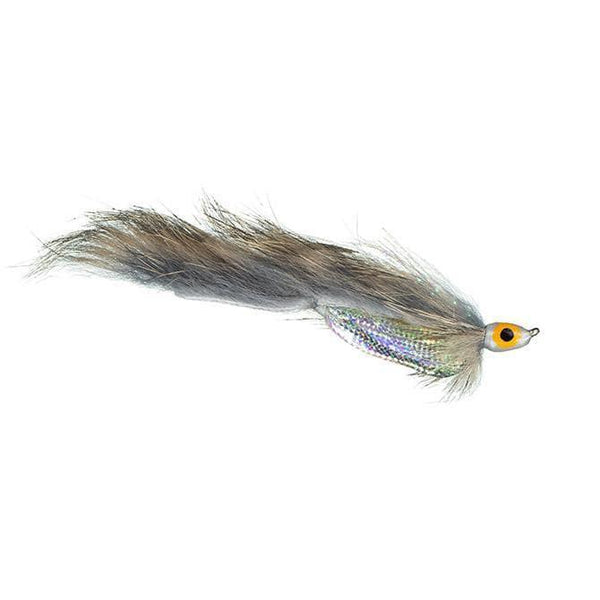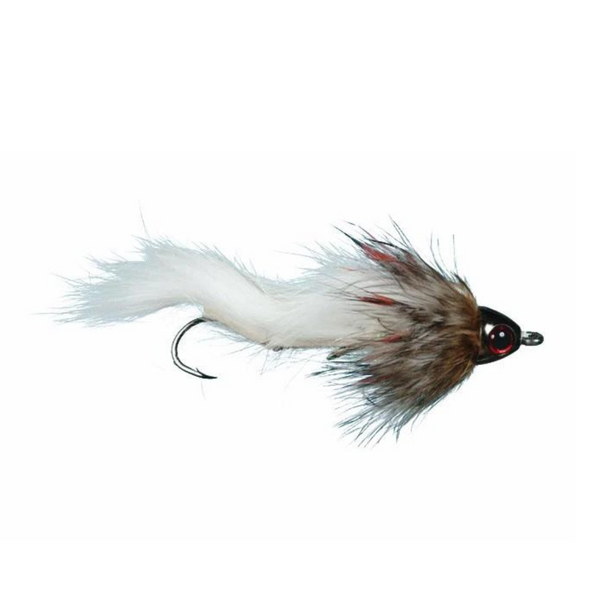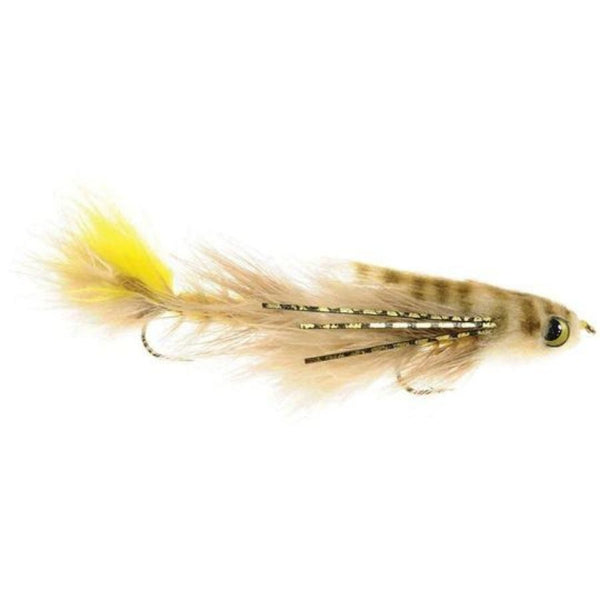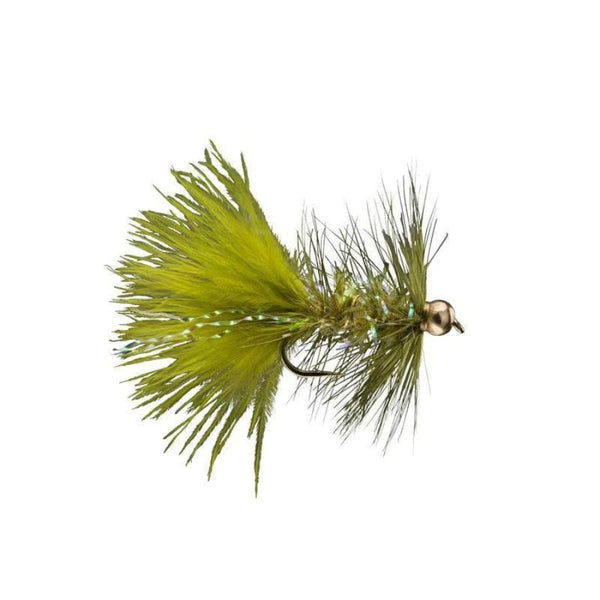Streamer fishing has long been one of the most effective and electrifying ways to target above-average trout. While smaller fish can get by on a steady diet of drifting mayflies, caddis, and midges, big trout need serious calories to maintain their size. That’s why they look to larger meals: a disoriented trout fry, a sculpin hugging the bottom, or a crayfish crawling across the rocks. These patterns aren’t just food—they’re a steak dinner that delivers maximum protein in a single bite.
But streamers don’t just trigger a feeding response. They also provoke aggression. A large trout will often chase down a streamer out of territorial instinct, competition, or sheer dominance. The sudden flash of movement in their zone is enough to flip a switch, and the result can be some of the most violent eats in fly fishing. For anglers, that combination of opportunity and aggression is exactly what makes streamer fishing so compelling: every cast carries the possibility of connecting with the kind of fish that redefines your season—or even your lifetime.
This article will discuss some of the most effective streamers for pursuing trout on fly. To learn more about the basics of when, where, and why to fish streamers, check out our guide to streamer fishing.
Streamers are a massive portion of any fly distributors catalog, so we're going to break them down by categories. While there is some crossover, this approach will allow us to delineate the nuances between styles of trout streamers.
Single-Hook Streamers
Single hook streamers can encompass buggers, leeches, and crayfish, however this section focuses on some of the top single-hook baitfish flies such as trout fry, sculpins, chubs, shiners, and other various minnow imitations.

1. Sparkle Minnow
This is a fly that should be in EVERY trout angler's streamer box. The fly is a testament to the notion that "simpler is better," utilizing a marabou tail and some wing-n-flash as the only primary ingredients. The natural movement of marabou undulates in the water column, while the flashy body imitates light reflecting off the scales of a fleeing baitfish. Big trout around the world love the sparkle minnow, but it is especially a staple in our home waters of the U.S. Rockies.

2. Zonker
The Zonker fits the bill in a few areas -- the natural movement of the rabbit strip resembles a wounded baitfish or leech when dead-drifted and is also effective when stripped. The underside of the fly's body is tied with mylar tubing, which again acts as a reflector to resemble a baitfish. This is both a very effective pattern and also one of that is relatively quick and easy to tie .

3. Kreelex Minnow
The kreelex minnow is one of those patterns that defies the principals of "imitation," consisting of nothing but flash. It doesn't resemble a baitfish in conventional terms, but functions the same way a spoon lure reflects light like the sun glinting off of tiny fish scales. The result is a very effective pattern that crushes everywhere from Montana down to Patagonia.
Articulated Streamers
There are several advantages to fishing an articulated fly, and it’s easy to see why these patterns have become a go-to for streamer anglers. First, incorporating multiple shanks—or even two hooks—creates a longer, more imposing profile in the water. That extra size does more than imitate a mature baitfish—it also draws the attention of the largest and most aggressive trout in the system.
Second, the jointed construction between shanks or hooks adds a level of movement that single-hook streamers simply can’t match. The fly flexes and undulates in the current, mimicking the natural, side-to-side spinal motion of a swimming fish. This realistic action can be the trigger that convinces a wary trout to commit.
Finally, articulated designs offer a practical advantage when it comes to hookups. By spreading the business end across both a lead and a trailing hook, you increase the odds of connecting no matter where the fish strikes—from a head-first attack to a short swipe at the tail. That extra insurance often makes the difference between a dramatic flash and an actual fish in the net.
1. Galloup's Dungeon
Perhaps the most reputable fly tyer of streamers with dozens of recognized patterns under his belt, Kelly Galloup's Dungeon is one of the most well-known articulated streamers ever. The combination of marabou, hackle, and a prominent deer hair head make for a slender profile that has plenty of movement without excessive material. It comes in multiles sizes and a wide-variety of colors for good reason--this fly continues to entice big fish everywhere.

2. Sculpzilla
The sculpzilla is one of the best sculpin imitations on the market for a few reasons. Firstly, the bulky head and slender tail replicate the profile of a sculpin really well and produces a lot of natural movement from the traditional use of rabbit fur or marabou. Additionally, the trademark head on the sculpzilla is heavier than most streamers--meaning anglers can get down deep without the use of a sinking fly line. This is a must as sculpins are generally found at the bottom of the river, so getting the fly down quickly is important.
With that in mind, the fly is going to perform better on rivers to eliminate snagging the bottom of shallow runs. It can be both stripped or dead-drifted, and performs well when swung and then stripped back through the current. Finally, different than most articulated streamers, the sculpzilla only has a single trailer hook and effectively eliminates the all too-common short strike.

3. Double Gonga
Most often, anglers are making a lot of casts and covering water while streaming fishing, meaning the weight and composition of a fly is important for ease of casting over a day of fishing. Craven's double gonga is a perfect example of a fly that has plenty of profile and pushes water, but sheds water well and isn't too heavy. The use of craft fur or polar fiber on the head makes for a great profile while overcoming the natural bouyancy of deer hair, and one of our trusted streamer patterns come time to "throw meat."
Buggers & Leeches
Yes, buggers and leeches are single-hook streamers, but there are some important differences from dedicated baitfish flies. Firstly, buggers and leeches can really replicate a number of forage, including small baitfish, crayfish, and most of all, leeches. Trout eat leeches everywhere they swim and make up a fundamental component of their diet. There is a reason the wooly bugger has stood the tests of time, and continues to perform year in and year out. This is a great "prospecting" fly when exploring new waters.
Secondly, buggers and leeches are excellent dead-drifted. If you're "hitting the bank" with a baitfish pattern, you're typically stripping it a few times before making another cast--hoping to elicit a responsive strike by a big fishing holding the bank or near structure. But a bugger/leech though can be deadly when nymphed as a dropper, underneath a big foam dry fly, swung, or fished as a stand-alone streamer and retrieved.
Finally, their profile is much slimmer than most baitfish patterns, and don't "push" water. They are often are only composed of dubbing, marabou, and some hackle, with plenty of variations in between, ranging in big patterns up to size 4 all the way down to micro buggers in size 14 and smaller.

1. Bead Head Bugger
The Bead Head Wooly Bugger is a must-have for any angler, especially beginners learning the ropes of both fly fishing and fly tying. Its simple design is deceptively effective—imitating everything from leeches and baitfish to dragonfly nymphs and large aquatic insects—which is why it consistently catches fish in rivers, lakes, and streams. The added bead head helps the fly sink quickly and gives it a jigging motion that triggers strikes when dead-drifted, swung, or stripped. For those new to tying, the bugger is a great pattern to start with, teaching essential techniques like palmering hackle, counter-ribbing, and achieving proper proportions. Available in a range of variations—like the Krystal Bugger, Hot Bead Bugger, and Complex Twist Bugger.

2. Balanced Leech
The balanced leech is a super unique pattern that uses a small pin tied onto the hook that extends beyond the hook eye. With with a bead attached to the pin, the bead counterbalances the weight of the hook and the materials. This is useful as it forces the fly to ride horizontal in the water column and better imitates a leech. Leeches are streamer flies that will largely be fished as a nymph, though jigging a leech on the bottom of a river or lake can be very successful.

Crayfish
Crayfish are not given enough credit as they are a high-protein source of food for trout. They come in a variety of sizes and colors, though browns, tans, and dark reds are popular. They work great dead-drifted, bounced along the river bottom, or ticked like a crayfish fleeing a predator with claws drawn.

1. Zirdle
Like other successful flies, the zirdle can imitate a number of different food sources to trout, including crayfish. Half girdle bug (Pat's Rubber Legs), half zonker, the zirdle is a testament that mashing two successful flies together can sometimes equal success. The rubber legs can imitate a massize stonefly nymph, but also the legs of a fleeing crayfish. The long zonker strip also imitates the up and down movement of a crayfish tail without too much effort on the part of the angler.

2. Clouser Cray
Bob Clouser, one of fly fishing’s true legends, designed the Clouser Crayfish to showcase how natural materials can create a lifelike and highly effective crayfish imitation. This pattern is a proven producer for both largemouth and smallmouth bass, which rely heavily on crayfish as a food source. Fish it deep through pools, along rocky structure, or crawl it slowly across the bottom to mimic a fleeing crayfish. Subtle twitches and short strips bring this pattern to life and often trigger aggressive strikes.

There are tons of streamers on the market, so rest assure there are many other productive streamers on the market. These are, however, an excellent set of choices for venturing into the streamer market, or selecting a few patterns for covering all of your bases.
If you are an angler who loves to fish streamers or would like to travel to a destination where streamers produce big fish, contact Yellow Dog to discuss a multitude of options. Additionally, Yellow Dog's fly shop carries a selection of streamer fly rods ideal for casting heavy lines and bulky flies across big water, in addition to a variety of fly lines for getting your fly in the zone.
Related Articles:
- Dry Fly Fishing: What, When, & Where
- Top Montana Fly Fishing Float Trips
- Useful Tactics for Fly Fishing Fast Water You Should Know
- The Top Streamer Fly Lines
- How to Choose the Right Hook for Fly Tying
- The Top Fly Rods for Streamer Fishing
Gear Guides:






























